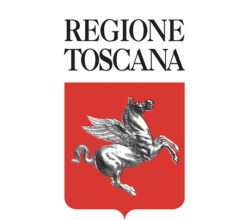
REGULATIONS – ACADEMIC DANCE
1. Introduction to the Discipline
Academic Dance includes all styles of classical and neoclassical dance, from pure technique to more contemporary interpretations inspired by the academic repertoire.
Each performance is a combination of technique, elegance, musicality, and interpretative ability, with a strong link to tradition while remaining open to the most current artistic evolutions.
2. Admitted Categories
Age categories are as follows:
-
Promotional: 6–7 years
-
Mini: 8–9 years
-
Youth: 10–12 years
-
Junior: 13–16 years
-
Adults: 17–35 years
-
Senior: 35+
📌 Age is calculated based on the year completed. For groups, the average age is considered, while in Duos, the age of the oldest participant is taken into account.
3. Technical Requirements
✅ Allowed Styles:
-
Classical Dance (technique, repertoire, variations)
-
Neoclassical
-
Stylistic contaminations that maintain an academic technical base
🔸 Stage lighting will not be a fixed white spotlight but will be managed by the technical direction to enhance each performance.
🔸 Small scenic elements functional to the choreography are allowed, provided they do not hinder the performance and are completely removed at the end.
🔸 Dangerous objects or items that may damage the stage are strictly prohibited.
4. Music and Content
Maximum durations:
-
Soloists: 1:30 min – 2:30 max
-
Duos: max 3:00 min
-
Groups/Formations: max 3:30 – 4:00
Content:
-
Music is free but must respect the chosen style.
-
Music from famous works and repertoires is allowed, provided it maintains artistic coherence with the choreography.
📌 Music must be submitted starting from October 1, when the Secretariat will send registered schools the link to the Choreography Form to be filled in.
5. Costumes, Scenic Elements, and Safety
-
Costumes must be consistent with the chosen style, age, and category.
-
Costumes must allow freedom of movement and respect the aesthetic codes of the discipline.
-
Hair and make-up must be neat and functional to the performance.
-
Any element that may pose a danger to dancers or the audience is prohibited.
6. Evaluation and Judging Criteria
Performances will be evaluated based on four criteria:
-
Technique – placement, precision, posture, musicality
-
Choreography – structure, use of space, originality
-
Stage Presence – thematic coherence, expressiveness, emotional impact
-
Overall Image – costume, make-up, hairstyle
📌 Scores will be expressed from 1 to 10, with the possibility of half points and a “+” sign.
7. Additional Notes
Skill Levels:
-
B: little/medium experience
-
A: advanced experience
-
P: professionals/teachers
Competition Units:
-
Soloist
-
Duo
-
Group (3–5 participants)
-
Formation (6+ participants)
Disqualification Causes:
-
Inappropriate behavior
-
Absence after the third call
-
Participation in the wrong specialty (e.g., neoclassical presented as pure classical)



